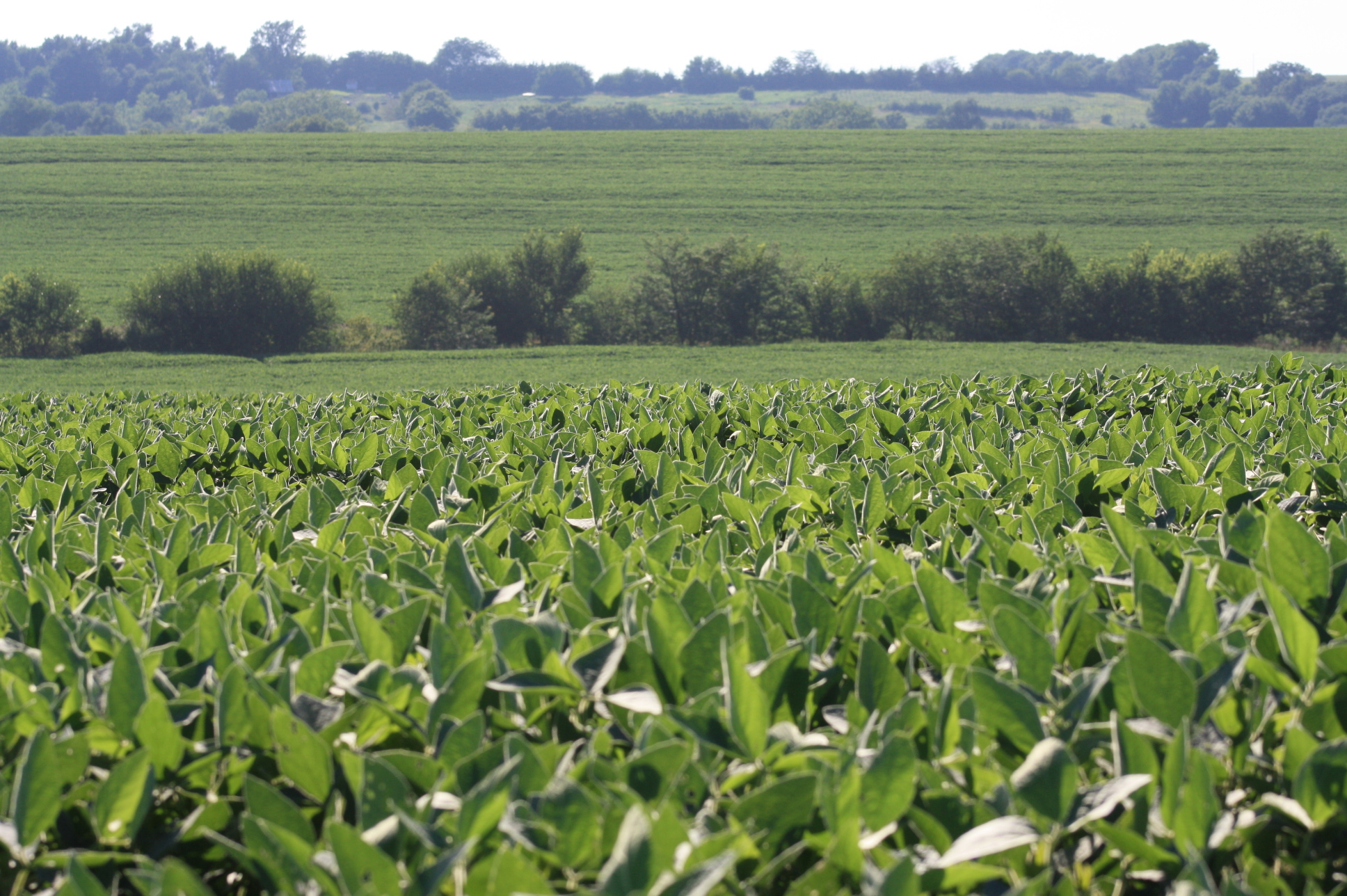 In a few posts, I’ve mentioned my love affair with field corn, and how it was first planted and harvested. What I failed to mention was the other “half” of what shaped my childhood ag experience and quite possibly, my appreciate for it. Soybeans. The other day, I was driving along the highway (Where unfortunately, the speed limit is still 55. 55? That’s slow enough for me to look around.) when I noticed the wind making soybean leaves look like waves on the ocean. It really was a beautiful sight, one otherwise taken for granted had the thought not occurred to me that my family spent “the other half” of their planting season drilling beans. (By the way, this photo was taken by my “other half.” He’s better with the camera than I am!)
In a few posts, I’ve mentioned my love affair with field corn, and how it was first planted and harvested. What I failed to mention was the other “half” of what shaped my childhood ag experience and quite possibly, my appreciate for it. Soybeans. The other day, I was driving along the highway (Where unfortunately, the speed limit is still 55. 55? That’s slow enough for me to look around.) when I noticed the wind making soybean leaves look like waves on the ocean. It really was a beautiful sight, one otherwise taken for granted had the thought not occurred to me that my family spent “the other half” of their planting season drilling beans. (By the way, this photo was taken by my “other half.” He’s better with the camera than I am!)
Then I realized how little I actually knew about the history of soybeans. Here’s a snapshot:
Soybeans originate from China. The first soybeans arrived in America in the early 1800s but it wasn’t until 1879 that a few brave farmers began to plant soybeans as forage for their livestock. Around 1900, the USDA was conducting tests on soybeans and encouraging farmers to plant them as animal feed. In 1904, the famous American chemist, G. W. Carver discovered that soybeans were a valuable source of protein and oil. He encouraged farmers to rotate their crops with soybeans. To the surprise of farmers, this produced a better crop. But it wasn’t until the 1940s that farming of soybeans really took off in America.
I think this is all part of the process of educating myself about where our modern ag industry comes from; knowing that a part of my own history emerged on our lands some 70 years ago. Although I don’t work on behalf of soybean farmers, many of my captive audience members raise soybeans. So I thought I’d learn a little more about them today.
Until we walk again…
